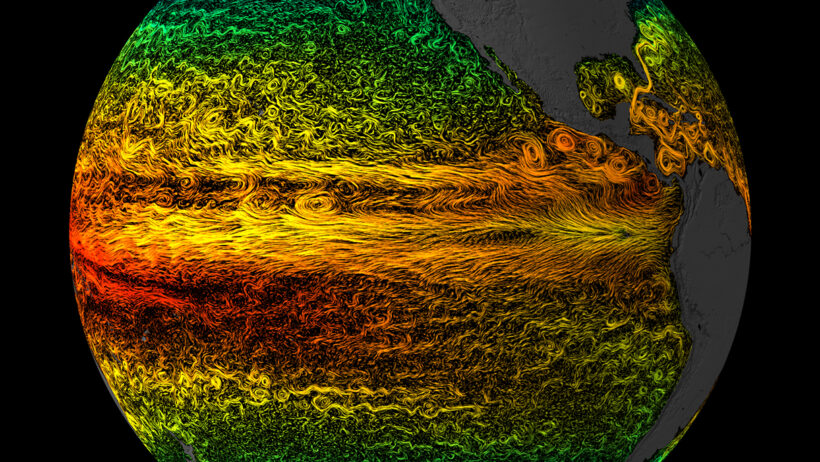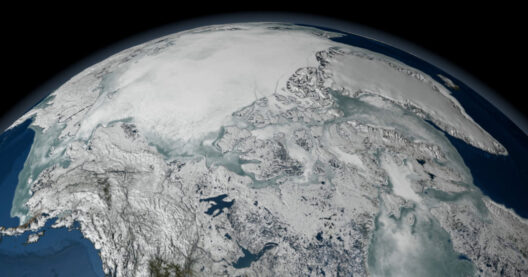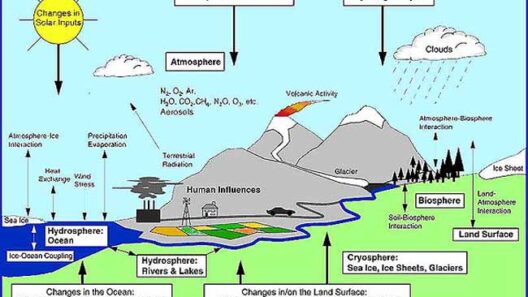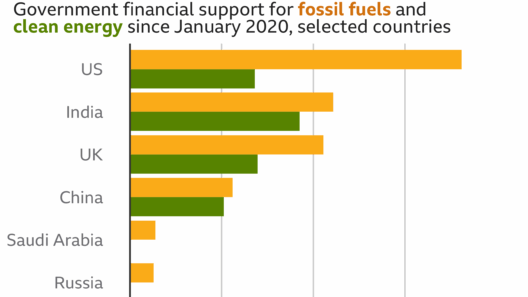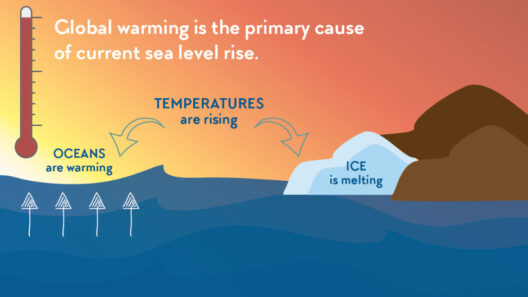The world’s oceans, vast and intricate, function as the arteries of our planet, channeling energy, nutrients, and life itself. Yet, these vital marine highways are now confronting an unprecedented crisis precipitated by global warming. Ocean currents, which have existed for eons, are undergoing transformative changes; shifts that could reverberate through the very fabric of our climate, marine ecosystems, and human societies.
At the core of this oceanic conundrum is the interplay between temperature and salinity. As the planet warms—largely due to anthropogenic activities—the delicate balance of these factors is disrupted. Warm water, less dense than cold water, rises to the surface while cold, salty water sinks. This natural ballet, often referred to as thermohaline circulation, is instrumental in regulating global temperatures and distributing nutrients across marine environments. But as melting ice caps contribute to an influx of fresh water into the oceans, the equilibrium is thrown into turmoil. The slow, deliberate currents that have carried life-sustaining nutrients across continents and between ecosystems are now at risk of becoming erratic, their rhythms altered, and their paths obstructed.
These changes are not merely theoretical; they manifest in observable phenomena. The Gulf Stream, a robust current that transports warm water from the Gulf of Mexico up the eastern seaboard of the United States and across to Europe, is slowing down. This deceleration is not just a local issue; it has far-reaching implications. Weather patterns are altered, leading to harsher winters in Europe, more intense storms, and rising sea levels that threaten coastal communities. Each fluctuation in the current is akin to a ripple in the fabric of reality, where each distortion reverberates, creating greater, and often more unpredictable, consequences.
Moreover, the rise in sea temperature catalyzes other environmental crises. Coral reefs, often referred to as the rainforests of the sea, are dying at alarming rates due to bleaching caused by warm waters. These reefs are not just beautiful ecosystems; they are crucial to marine biodiversity, providing habitat and protection for myriad species. With ocean currents in disarray, the dispersal of larval organisms, and the migration patterns of marine species are altered, threatening the delicate balance of these underwater cities. A disruption in the currents translates to a disruption in life—a calamitous scenario unfolding before our eyes.
The consequences of altered ocean currents extend beyond marine species. Human societies, particularly those reliant on fisheries, are acutely affected. As fish populations migrate in pursuit of optimal temperature and food sources, communities built around fishing industries face uncertainty. The once-reliable catch of anchovies in the Pacific or cod in the North Atlantic becomes erratic, leading to economic instability. Entire nations may witness a decline in food security, as the lifeblood of their economies—the ocean itself—is compromised.
Furthermore, the ramifications of changing currents are intricately intertwined with climate systems on land. The Southern Oscillation, a periodic fluctuation in ocean temperatures in the Pacific, influences weather patterns across the globe. As ocean currents falter, we may expect to see an uptick in extreme weather events, from droughts to hurricanes. The very essence of our climate system, with interconnected networks of air and water, stands in jeopardy.
This precarious situation inspires urgent action. The ocean’s health mirrors the vibrant hues of a well-tended garden, while the stark reality of a warming world reveals a landscape withered and parched. Global leaders must recognize the necessity for immersive policies that not only mitigate greenhouse gas emissions but also foster robust marine conservation. Initiatives such as the establishment of marine protected areas can serve as sanctuaries for struggling species and habitats, allowing ecosystems to recover in the face of adversity.
Innovative science will play a critical role in understanding and predicting the behavior of ocean currents in a warming world. The marriage of technology and marine research can help illuminate patterns that have, until now, remained cloaked in the depths of the ocean. By deploying advanced monitoring systems and satellite observations, scientists can collect vital data to anticipate changes and adapt strategies accordingly. The need for collaborative global efforts is more pressing than ever; sovereign nations must transcend borders, acknowledging that the ocean is a shared resource that demands collective stewardship.
Moreover, education is pivotal. Raising awareness about the complexities of ocean currents and their impact on the environment and humanity fosters a sense of stewardship among individuals and communities. Engaging with local populations to cultivate a culture of guardianship can inspire action—whether through beach clean-ups, sustainable fishing practices, or advocating for policies that address climate change. The fight against the perils posed by shifting ocean currents begins at the grassroots, where individuals harness their collective power to influence change.
As we navigate the tumultuous waters of climate change, our understanding of ocean currents must evolve. In this era of profound uncertainty, the realities of warming oceans beckon us to reevaluate our relationship with the earth’s aquatic realms. The sea, like a relentless tide, calls for resilience and adaptability. By addressing the crisis of ocean currents, we can safeguard not only the health of the ocean but also the intricate tapestry of life that hinges on its stability. The stakes are undeniably high—our planet’s future hangs in the balance, and it is incumbent upon us to heed the call for action.



